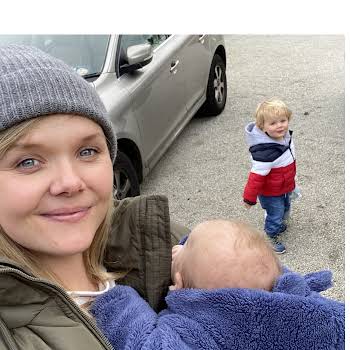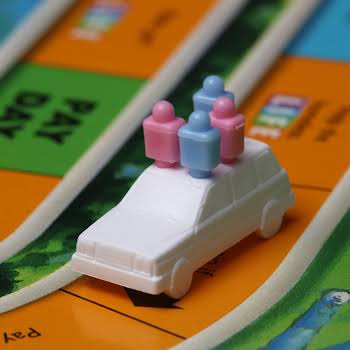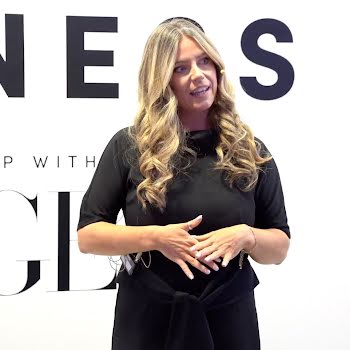
By Amanda Cassidy
10th Aug 2019
10th Aug 2019
New shoes are being gathered, hems let down and schoolbags washed. As we get our houses into gear for the new school year ahead, it is also time to consider some of the more icky parts of what that brings.
“Welcome to motherhood. You will be tired for at least the next five years.” That’s the beautiful text I received from my elder sister the day my first child arrived. I giggled to myself, oblivious that not only was she deathly serious, but she was being generous with the five years.
Seven years into my journey into parenthood – I am still permanently exhausted. Being responsible for tiny humans wears you out. And as cute as they are, they also tend to churn up all sorts of gross.
Mummy mode
After the lovely poopy and snotty baby phase, we have to look forward to such joys as cradling half-chewed, regurgitated food in our hands in restaurants while we search for the nearest bin. We’ve to struggle to keep our faces in ‘patient, kind mummy-mode’ when they’ve thrown up all over us in the night, and then once you hand them over to the education system, we have to contend with the ultimate parenting horror show – getting rid of head lice.
Related: The only parenting book you’ll ever need in your life
My solution is to prevent it at all costs. I spray my children’s coats with tea tree oil. I dunk their heads in (natural) preventative tonics and scrape their hair back in the mornings like they are about to compete in the finals of Strictly Ballroom. Although it hasn’t happened to me yet, us mums are not immune to having the pesky insects either. Rather than shave your entire head this term, we’ve put together some tips and tricks to help keep them at bay. (*Scratches head)

Prevention
Of course, prevention is the holy grail of nit-free locks. Ideally, your child’s hair should be tied up if it is long and a hairband can help to keep those frizzy bits in place. Better still, you can use a preventative spray. It’s easy to make your own using essential oils (5 drops of lavender, 5 of eucalyptus, 5 of rosemary, 5 drops of tea tree oil and 5 of peppermint oil). Pop them into a spraying bottle with about 8 oz of water and give a quick spritz on your child’s hair each morning. Don’t forget to give the back of their coats a quick spray too as often head lice can be spread from coats hanging next to each other on the communal coat rack. Interesting information point – the peak age of head lice infection is between 7 and 8 years of age. Lovely.
The first signs
So, first things first, head lice cannot jump or fly. They are spread by head-to-head contact and climb from the hair of someone who has had head lice to the hair of someone else. In a perfect world, we would check our child’s hair every time it’s washed. The aim of this is to find the nits (tiny eggs) before they hatch into lice (the insect).
A handy tip is to set the dryer to cool and blow it through your child’s hair revealing their scalp, so you can monitor any activity a little closer. The most likely areas lice will lay their eggs is where it is warmest, at the nape of the neck and behind the ears. *shiver
Some nits are extremely well-hidden so it is a good idea to use a dedicated lice comb (available from your pharmacy) to comb through their hair, which can reveal where those pesky pests are trespassing.

How to check
If you get that dreaded note home saying that lice have been found in your child’s class, wash your child’s hair and then leave in the conditioner. Brush it out while still wet and then switch to the lice comb. Make sure the teeth of the comb touch the top of the hair at the scalp. Sweep it down right to the ends of the hair and check the comb for lice. Section the hair and brush each section around six times. Have a dry tissue at the ready, and wipe the comb after each sweep. Inspect the contents of the tissue to see any nits or lice. Next, rinse out the conditioner and repeat on wet hair. It is a good habit to get into during school term and will ensure that you catch anything early (which is worth the extra time and effort).
Oh hell, we have it. What now?
Repeat after us…this too shall pass, this too shall pass. Headlice isn’t dangerous for your child, but you do want to get rid of it as soon as possible to avoid spreading it to others. Some parents keep lice treatment shampoo at home in the bathroom press, ready for any rogue activity at all times. Some treatments are now chemical free which is important to many parents. Apply it according to the instructions. It is usually applied to dry hair and left for around 10 minutes before being rinsed out.
Next, you use the lice comb to brush out the dead lice/eggs as described. Remember that the life cycle of an egg is 21 days, so make sure you comb and comb and comb again to make sure you get every last one or they will simply come back. You may need to repeat the treatment after 7 days to ensure no stragglers remain. We suggest that you check the hair under natural light which shows up the eggs a little more clearly.
It takes a village…
The best parenting practice is a community effort. Being meticulous about this side of things is really important to prevent spreading head lice to other family members, to the rest of the class and (gasp) ourselves.
Inform the school if you do discover head lice or nits on your child. Regular combing in the evenings is a good habit to get into too to ensure you keep head lice at bay this school year.
(You can stop scratching now).
Need more help? Here’s some more information on the issue.
Image via Unsplash.com
Read more: The truth about French parenting
Read more: How screens became the parenting default when it comes to distracting your children
Read more: This is how much parents pay for back-to-school costs






















